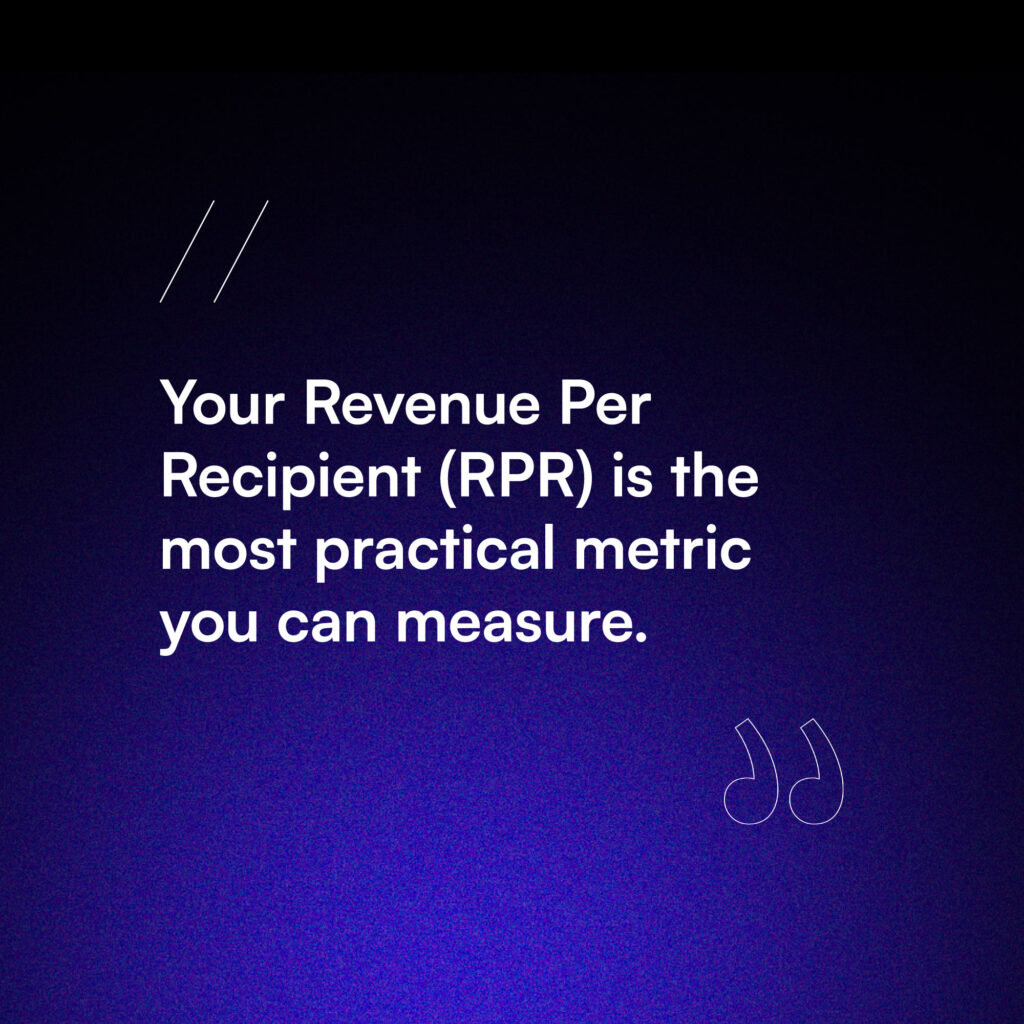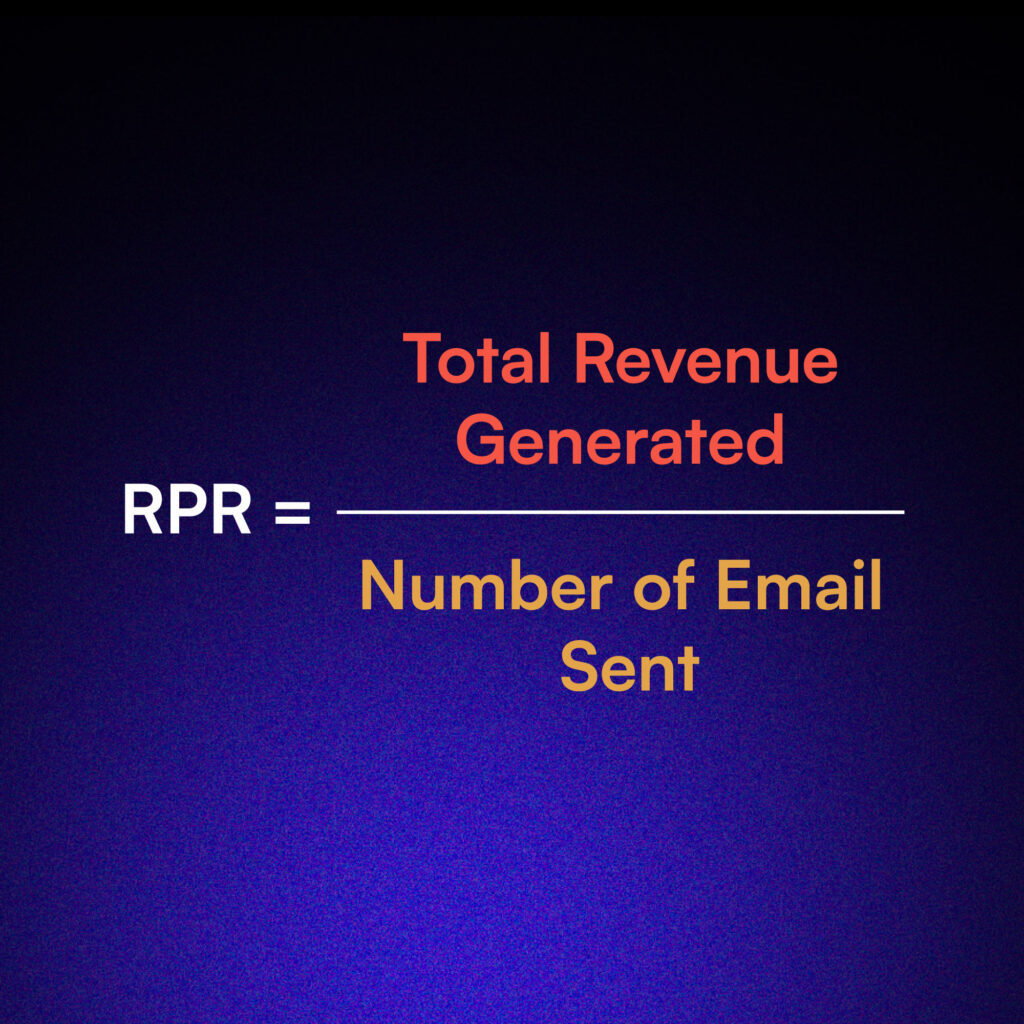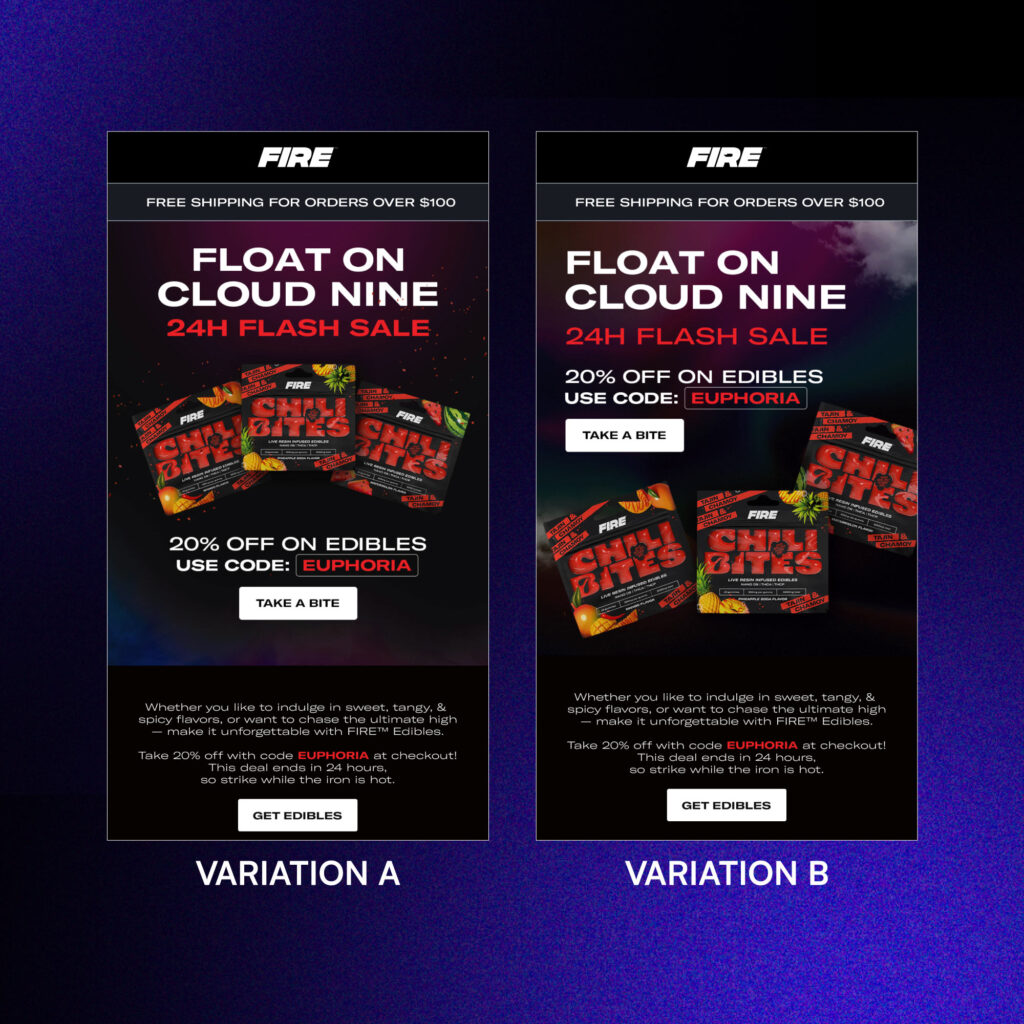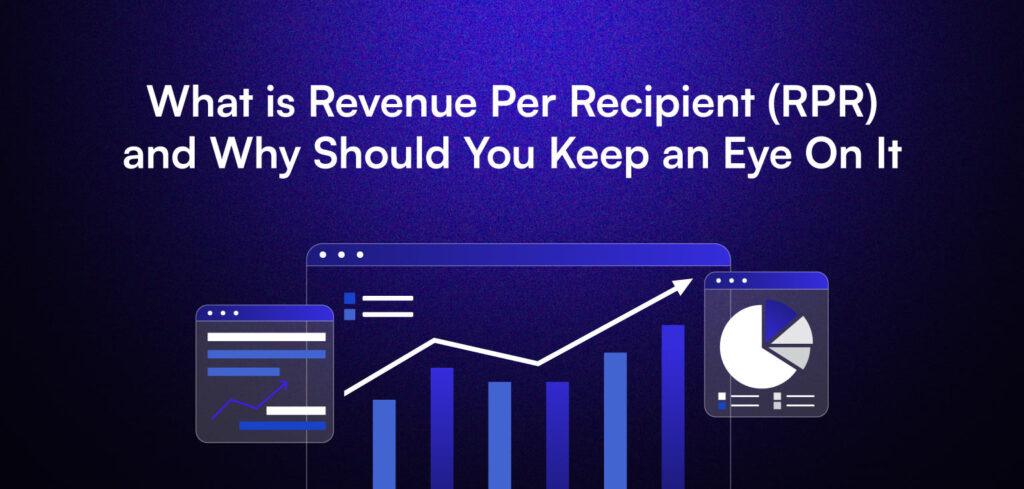Email Marketing continues to be a powerhouse for driving revenue and nurturing customer relationships.
While metrics like open rates and click-through rates offer valuable insights, there’s one often-overlooked metric that can truly transform your email marketing strategy: Revenue per Recipient (RPR).
This powerful key performance indicator (KPI) goes beyond surface-level engagement to directly measure the financial impact of your email campaigns—giving you a realistic picture of how your marketing efforts are paying off.
In other words, it’s the most practical KPI to measure.

In this comprehensive guide, we’ll dive deep into RPR, exploring its significance, calculation methods, benchmarks, and actionable strategies to boost your email marketing ROI.
What is Revenue per Recipient (RPR)?
Revenue per Recipient or RPR, is a metric that quantifies the average amount of revenue generated by each email sent in a campaign.
Unlike broader metrics that focus on overall campaign performance, RPR provides a granular view of how individual emails contribute to your bottom line.
This metric is crucial for understanding the true value of your email marketing efforts and can guide decision-making in content creation, list segmentation, and campaign optimization.
It’s worth noting that some Email Service Providers (ESPs) use the term “Revenue per Email” (RPE) instead of “Revenue per Recipient” (RPR). These metrics are essentially the same, both measuring the average revenue generated per email sent. This slight difference in terminology doesn’t affect the fundamental importance of tracking this metric to assess the financial impact of your email campaigns.
How to Calculate Revenue per Recipient
If you are using Klaviyo, this metric is readily available on your dashboard. However, if you’re on another platform or you want to understand the calculation, here’s how to manually compute your Revenue per Recipient:

Calculating RPR is straightforward, but it requires careful tracking of both your email sends and the revenue directly attributed to those emails. Here’s the basic formula:
RPR = Total Revenue Generated / Number of Emails Sent

For example, if your email campaign generated $15,000 in revenue and you sent out 7,500 emails, your RPR would be:
$15,000 / 7,500 = $2 per email
It’s important to note that this calculation can be refined further by considering factors such as attribution window, direct vs. indirect revenue, and excluding non-openers.
What is attribution window?
This is the timeframe we consider for counting revenue from an email. For example, if we use a 7-day window, any purchases within a week of sending the email count towards its RPR. This helps us understand the email’s impact over time, not just immediately after sending.
What is direct revenue?
This is the money earned directly from email clicks. When someone clicks a link in your email and buys something right away, that’s direct revenue. It’s the most straightforward part of RPR.
What is indirect revenue?
This includes sales that happen after someone interacts with your email, but not through direct clicks. For instance, if someone reads your email, doesn’t click anything, but later goes to your website and makes a purchase. Depending on your tracking methods, you might count this towards your email’s RPR.
What about excluding non-openers?
Some marketers prefer to calculate RPR based only on opened emails. This can give you a clearer picture of how well your email content drives revenue among people who actually see it.
What is a Good Revenue per Recipient?
Figuring out what counts as a good RPR isn’t straightforward because it varies for different businesses. There’s no single number that works for everyone.
Instead, a good starting point is to aim for your email marketing to at least cover its costs, and ideally, make more money than you spend on it.
Think of it this way: If you’re spending $100 on your email marketing (including tools, time, and content creation) and your emails are bringing in at least $100 in sales, you’re breaking even. That’s a baseline.
But the goal is to bring in more than you spend, so your emails are actually making you money.
Your good RPR might be different from another company’s. It depends on things like what you sell, how much it costs, and how often you send emails. The key is to track your own RPR over time and work on improving it, rather than comparing it to a fixed number.

The Importance of Tracking Revenue per Recipient
Measure Campaign Effectiveness
RPR shows you how much money each email campaign brings in. It’s like a report card for your emails, telling you which ones are star performers and which need improvement. This allows you to quickly identify your most successful strategies and content types, guiding future campaign decisions.
Guide Resource Allocation
By knowing which emails make the most money, you can make smart decisions about where to put your time and budget. If your holiday sale emails consistently have a high RPR, you might decide to invest more in creating and designing these emails. This focused approach ensures you’re maximizing returns on your email marketing efforts.
Justify Marketing Spend
When you can show that your emails are making money, it’s easier to explain why email marketing is worth investing in. If you can demonstrate that for every dollar spent on email marketing, you’re generating several dollars in revenue, it becomes much easier to justify maintaining or increasing your email marketing budget to stakeholders.
Optimize Email Strategy
RPR insights can help you improve various aspects of your email marketing, from content creation to list segmentation and send times. For instance, if you notice that emails sent on Tuesdays have a higher RPR than those sent on Fridays, you might adjust your sending schedule. Or if emails featuring customer testimonials have a higher RPR, you might include more of these in future campaigns.
Benchmark Performance
By tracking RPR over time, you can see if your email marketing is improving. It’s like keeping a score in a game – you want to see your numbers going up. This long-term view helps you understand the impact of your efforts, identify trends in your email performance, and set realistic goals for future campaigns.
How to Improve Your Revenue per Recipient
Boosting your RPR requires a multi-faceted approach. Here are detailed strategies to help you maximize the revenue potential of each email:
Advanced List Segmentation
Create hyper-targeted segments based on purchase history, engagement level, and customer lifetime value. This approach allows for more personalized and relevant email content, potentially increasing your RPR.
Personalization at Scale
Use customer data and AI tools to create highly personalized email experiences with dynamic content and product recommendations. This level of personalization can significantly improve engagement and conversion rates, boosting your RPR.
Subject Line Optimization
Craft compelling subject lines that increase open rates and set accurate expectations for revenue-driving content. Effective subject lines are crucial for getting your emails opened, the first step towards generating revenue.
Read this next: 7 Effective Subject Line Formulas to Boost Your Open Rates
Email Design and User Experience
Create visually appealing emails that are optimized for conversions across all devices. A well-designed email that’s easy to navigate can significantly improve click-through rates and conversions, directly impacting your RPR.
Strategic Call-to-Action (CTA) Optimization
Refine your CTAs with action-oriented language and strategic placement to drive more clicks and conversions. Effective CTAs can significantly increase the likelihood of recipients taking the desired action, thus improving your RPR.

Timing and Frequency Optimization
Determine the optimal timing and frequency for sending emails to maximize engagement without causing subscriber fatigue. Finding this balance can lead to higher open and click-through rates, potentially increasing your RPR.
High-Value Product Focus
Strategically promote higher-priced items or bundles to boost overall revenue. By focusing on high-value products, you can increase your average order value and, consequently, your RPR.
Automated Email Series
Implement advanced automated email flows to nurture leads and encourage repeat purchases. These series can help guide customers through the buying journey, increasing the likelihood of conversions and improving your RPR.
Continuous List Hygiene
Regularly clean your email list to maintain engagement and improve deliverability. A clean, engaged list can lead to better email performance and higher RPR.
Advanced Analytics and Testing
Make use of advanced analytics tools and testing methodologies to continually refine your email marketing strategy. This data-driven approach allows for ongoing optimization, potentially leading to consistent improvements in your RPR.
So, what now?
Revenue per Recipient is more than just another metric—it’s a powerful metric for understanding and optimizing the true value of your email marketing efforts.
By focusing on RPR, you align your email strategy directly with your business’s bottom line, ensuring that every campaign contributes meaningfully to your revenue goals.
Are you ready to transform your email marketing from a communication channel into a revenue-generating powerhouse? Start focusing on your RPR today, and watch your email marketing ROI soar to new heights!


